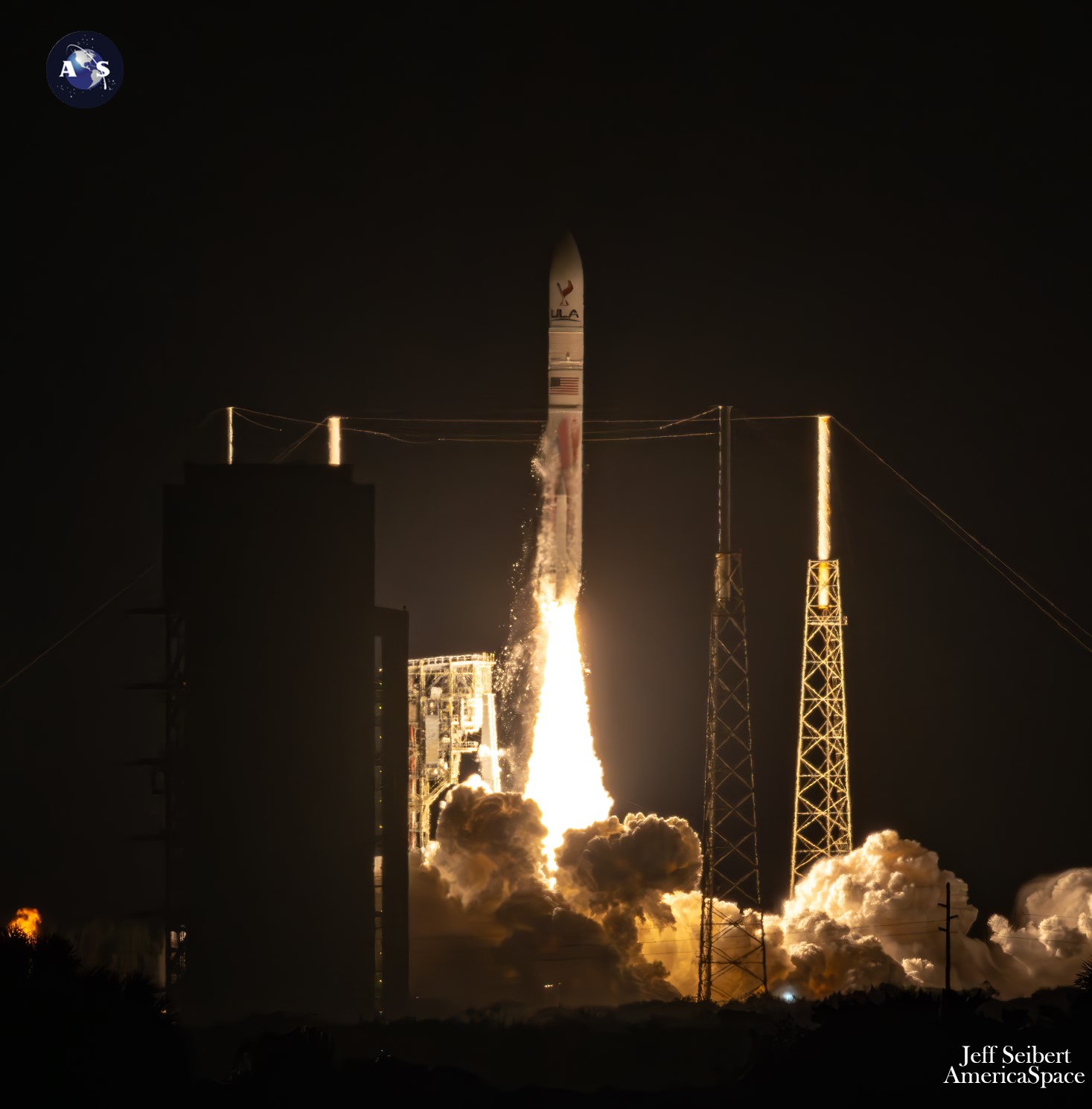
After a decade in development, United Launch Alliance (ULA) triumphantly executed the maiden certification voyage of its Vulcan-Centaur heavylifter in the early hours of Monday morning. Designated “Cert-1”, the 202-foot-tall (61-meter) behemoth—which ULA intends will ultimately replace its in-service Atlas V and soon-to-be-retired Delta IV fleets—roared aloft from Space Launch Complex (SLC)-41 at Cape Canaveral Space Force Station, Fla., at 2:18:38 a.m. EST, turning night into day across the sleeping Space Coast.
“Vulcan’s inaugural launch ushers in a new, innovative capability to meet the ever-growing requirements of space launch,” said ULA CEO Tory Bruno after this morning’s successful launch. “Vulcan will provide high performance and affordability while continuing to deliver our superior reliability and orbital precision for all our customers across the national security, civil and commercial markets. Vulcan continues the legacy of Atlas as the world’s only high-energy architecture rocket.”
Aboard Cert-1 was Astrobotic’s Peregrine commercial lunar lander, targeting a highly elliptical orbit of more than 220,000 miles (360,000 kilometers) to intercept and land on the Moon late next month. The Vulcan-Centaur also helped propel Celestis, Inc.’s Enterprise Flight memorial payload into deep space.
Peregrine Mission One (PM1) was intended to deliver 77 pounds (35 kilograms) of customer payloads from seven sovereign nations to the Moon under NASA’s Commercial Lunar Payload Services (CLPS) program. The four-legged lander was expected to alight in the Moon’s Sinus Viscositatis (“Bay of Stickiness”) near Gruithuisen Domes, a set of large, non-basaltic domes on the northeastern border of Oceanus Procellarum (“Ocean of Storms”) on 23 February.
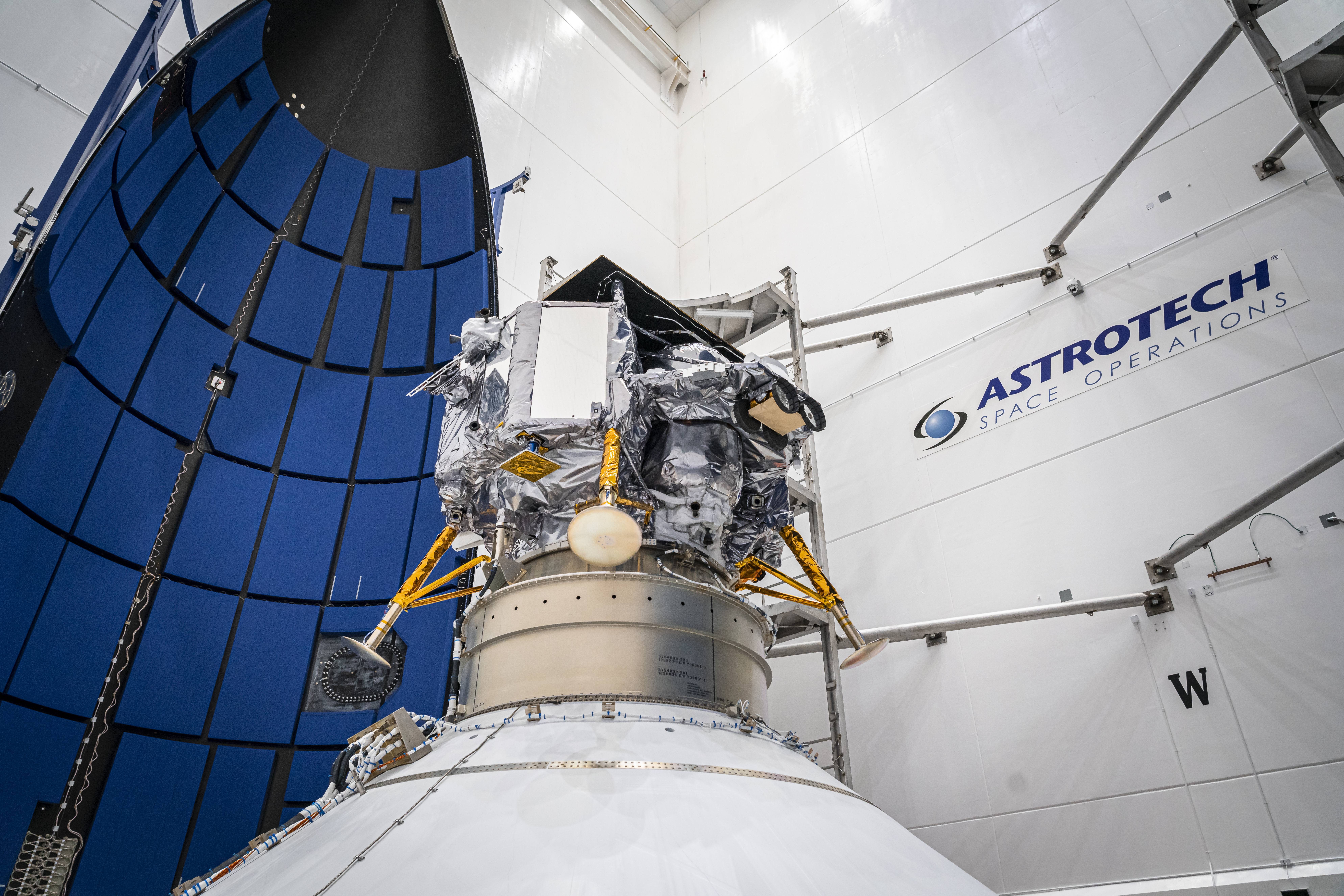
“The first CLPS launch has sent payloads on their way to the Moon—a giant leap for humanity as we prepare to return to the lunar surface for the first time in over half a century,” said NASA Administrator Bill Nelson. “These high-risk missions will not only conduct new science at the Moon, but they are supporting a growing commercial space economy while showing the strength of American technology and innovation.”
Two years ago, Houston, Texas-headquartered Celestis announced its intent to fly a memorial spaceflight payload, “Enterprise Flight”, on Cert-1. Carrying more than 150 flight capsules with cremated human remains and complete-human-genome individual DNA samples—including Star Trek creator Gene Roddenberry, his wife Majel Barrett Roddenberry, Montgomery “Scotty” Scott actor James Doohan, Leonard “Bones” McCoy actor DeForest Kelley and Lt. Nyota Uhura actress Nichelle Nichols—and messages of greeting and goodwill, Enterprise Flight will be emplaced by the Centaur V into a stable heliocentric orbit “on an endless journey in interplanetary space”.
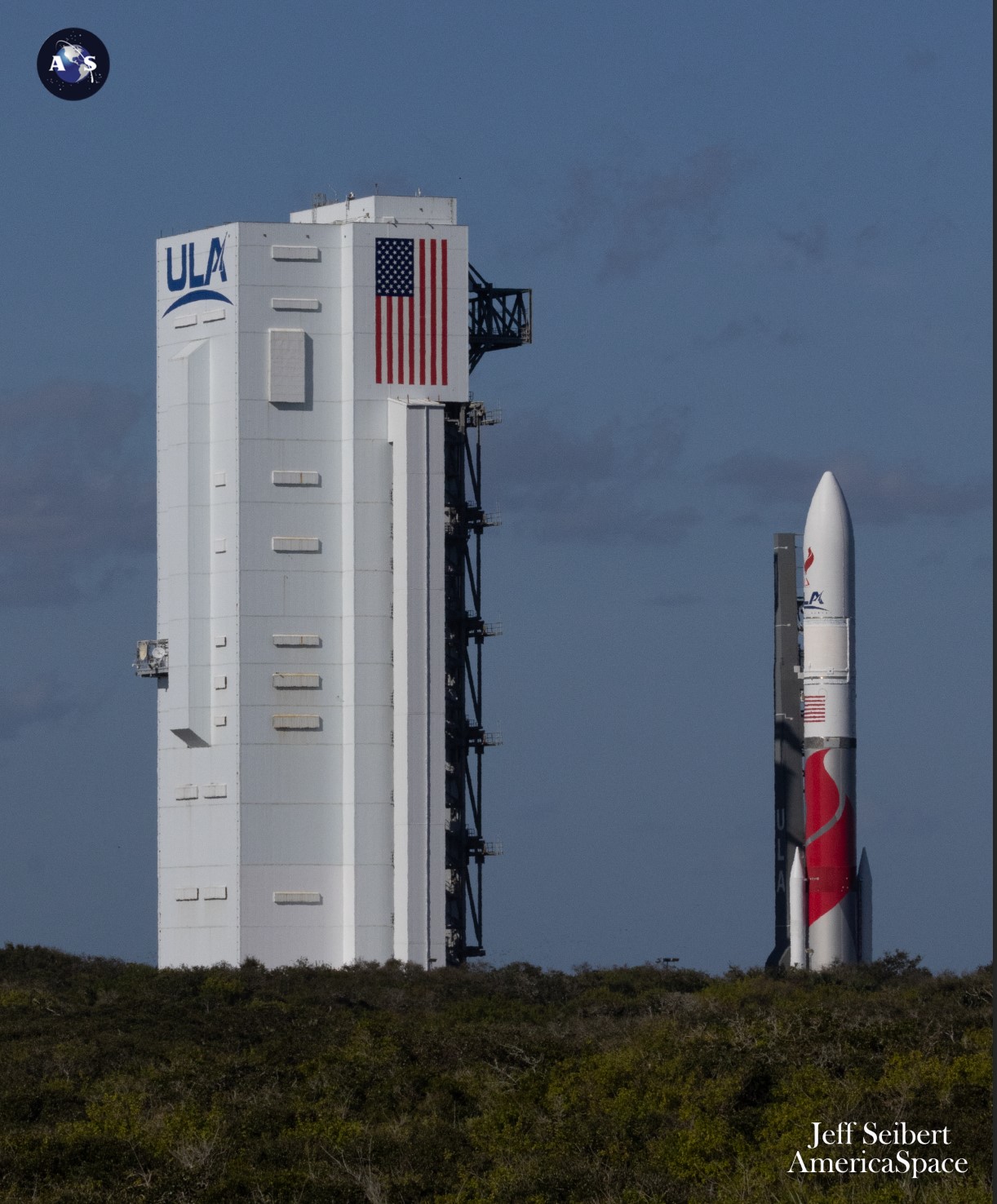
Weather for this opening launch attempt over three back-to-back days proved by far the most favorable, with an 85-percent likelihood of acceptable conditions at T-0. The backup opportunities on Tuesday and Wednesday were predicted to hover around 30-percent-favorability and 45-percent-favorability, respectively, according to data provided by the 45th Weather Squadron at Patrick Space Force Base.
“By the primary launch window, high pressure should bring generally favorable weather conditions, although there is a slight chance of a Thick Cloud Layers Rule violation from clouds associated with the subtropical jet,” the 45th cautioned in its Sunday update. “By Monday night, winds will begin to increase ahead of an approaching low-pressure system,” it added, with an expectation that there would be no cessation until late Tuesday night, with “multiple” Launch Commit Criteria (LCC) violations likely.
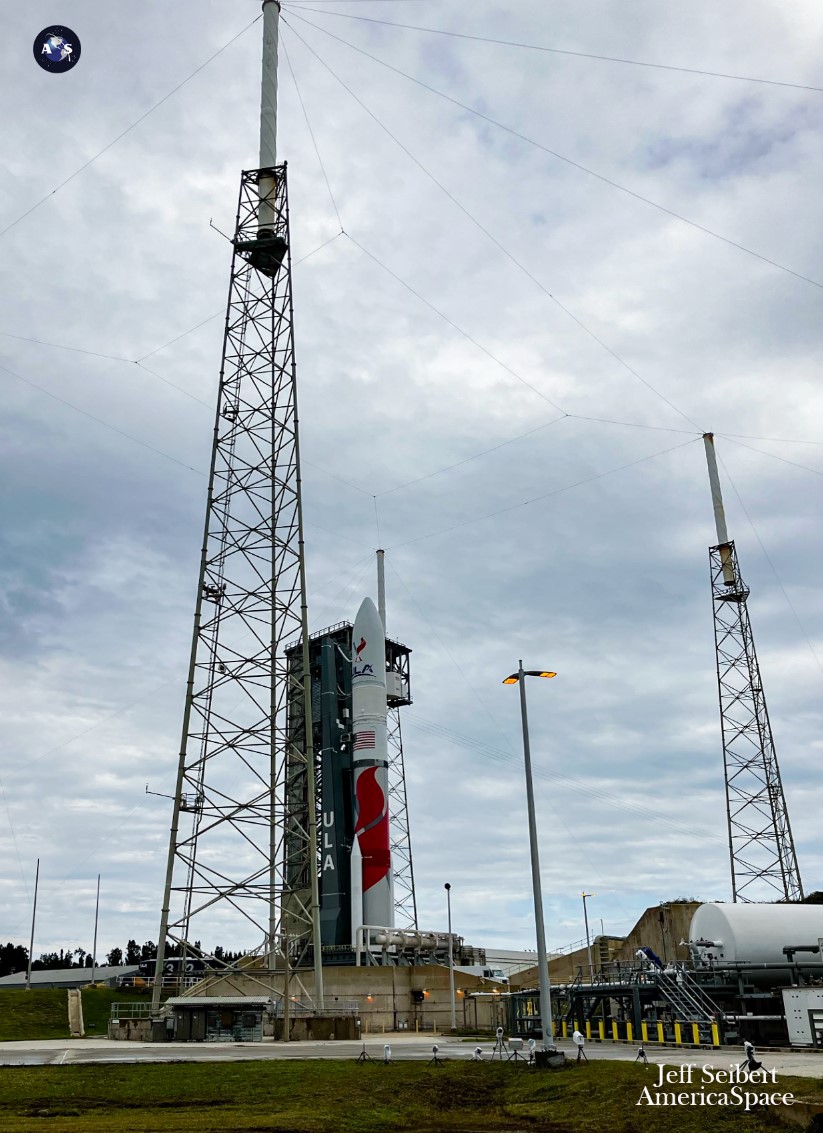
As previously outlined by AmericaSpace, Vulcan-Centaur has been in development as ULA’s Next Generation Launch System (NGLS) for the last decade. Its 109.2-foot-long (33.3-meter) core stage, painted in glorious red, white and gray Vulcan livery, is powered by a pair of Blue Origin-built BE-4 engines, fueled by Liquefied Natural Gas (LNG) and liquid oxygen, with a pair of Northrop Grumman Corp.-furnished Graphite Epoxy Motor (GEM)-63XL solid-fueled strap-on boosters affording a liftoff impulse in excess of 2.1 million pounds (950,000 kilograms).
With the ULA launch team tracking no technical issues with the vehicle, Launch Weather Officer Brian Belson of the 45th last night identified a calm outlook with a mid-to-high-level of clouds, good visibility, northerly winds between 13 mph (20 km/h) and 20 mph (32 km/h) and temperatures close to 15 degrees Celsius (59 degrees Fahrenheit). Cloud thickness, Mr. Belson added, remained a lingering concern for potential violation.
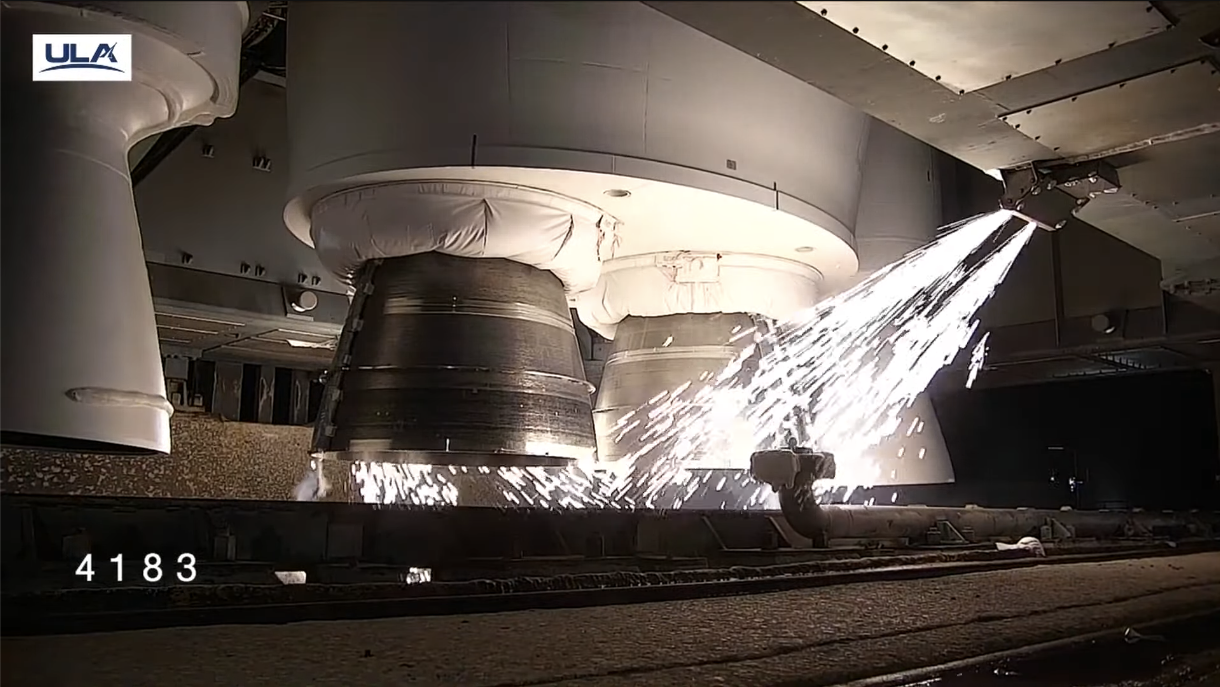
The giant rocket was powered up and the countdown initiated at 3:58 p.m. EST, with system and valve functional tests, pressurization of the helium bottles aboard the 38.5-foot-long (11.7-meter) Centaur V upper stage and removal of the launch pad’s “flame bucket” by ground crews. Shortly thereafter, from his console in the Advanced Spaceflight Operations Center (ASOC), ULA Launch Conductor Dillon Rice instructed teams to depart the pad, ahead of the first built-in “hold” in the countdown at T-4 hours and 30 minutes before polls got underway for cryogenic tanking to begin.
Finally, at 8:46 p.m. EST Mr. Rice polled his team and ULA Launch Director Tom Heter III approved fueling to get underway. Liquid oxygen storage tankage was pressurized, airborne vent valves were cycled and helium bottles were charged to flight levels and loading of the Centaur V with liquid oxygen got underway shortly past 9 p.m.
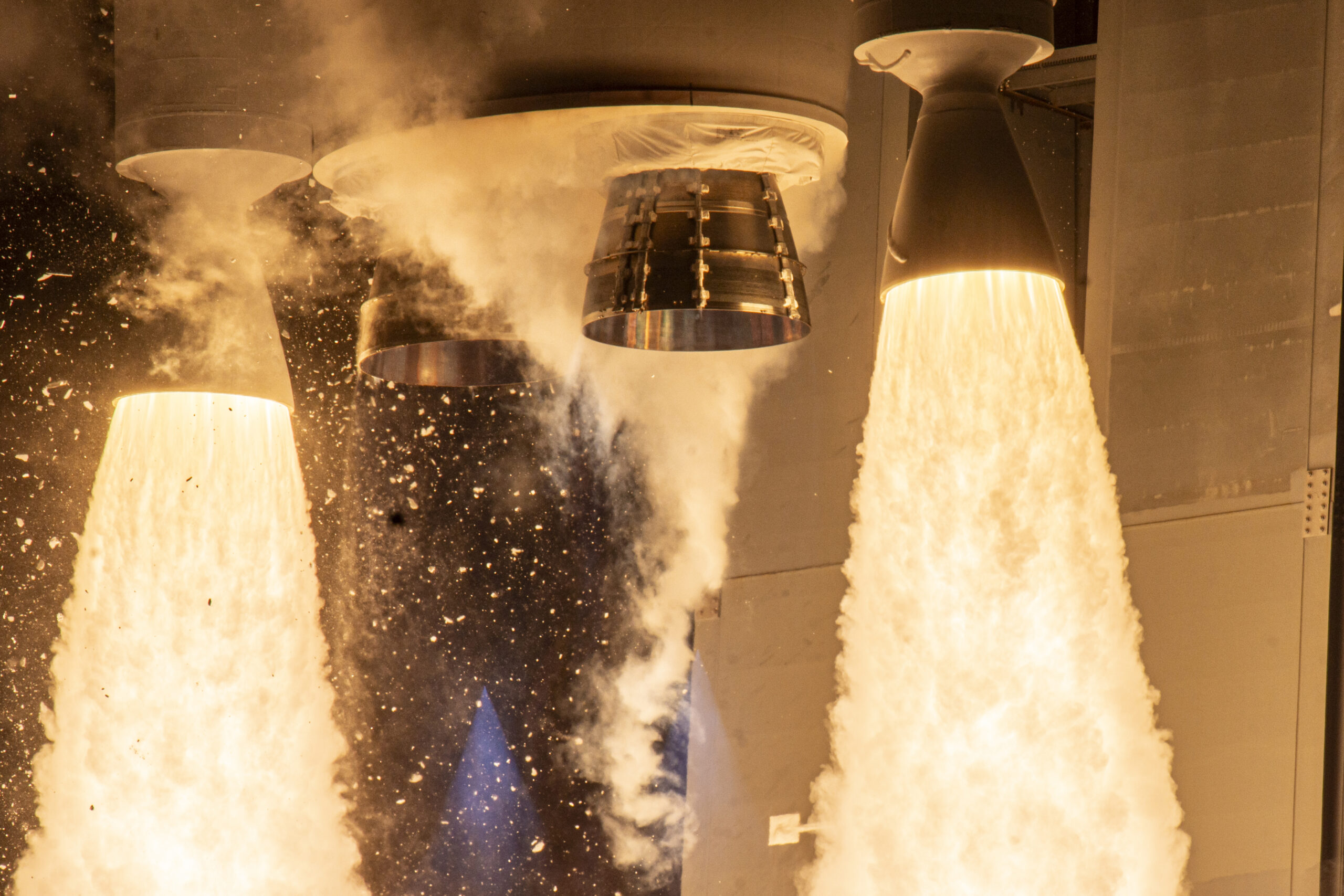
Shortly afterwards, loading of 300,000 gallons (1.1 million liters) of LNG aboard the Vulcan—contained in three horizontal propellant tanks—got underway and liquid oxygen fueling started at 10 p.m. A little more than an hour later, liquid oxygen tanking was concluded and entered “topping”, as levels were continuously replenished until near T-0 to replace the boiled-off cryogens. When fully loaded, the rocket weighed some 1.4 million pounds (663,000 kilograms).
Due to the Moon-bound target of Cert-1, the targeted T-0 was tightly restricted to specific dates and times in which Peregrine could be most efficiently inserted into its highly elliptical orbit of 220,000 miles (360,000 kilometers) to intercept and be captured by lunar gravity. “To facilitate Peregrine’s ability to perform its own lunar injection burn, Vulcan will not use a continuous launch window and instead have instantaneous launch opportunities within each window,” ULA reported. “Some days have multiple moments in time available to launch, while others have only one chance.” For Monday morning, a group of six T-0 opportunities existed between 2:18 a.m. and 3:03 a.m. EST.
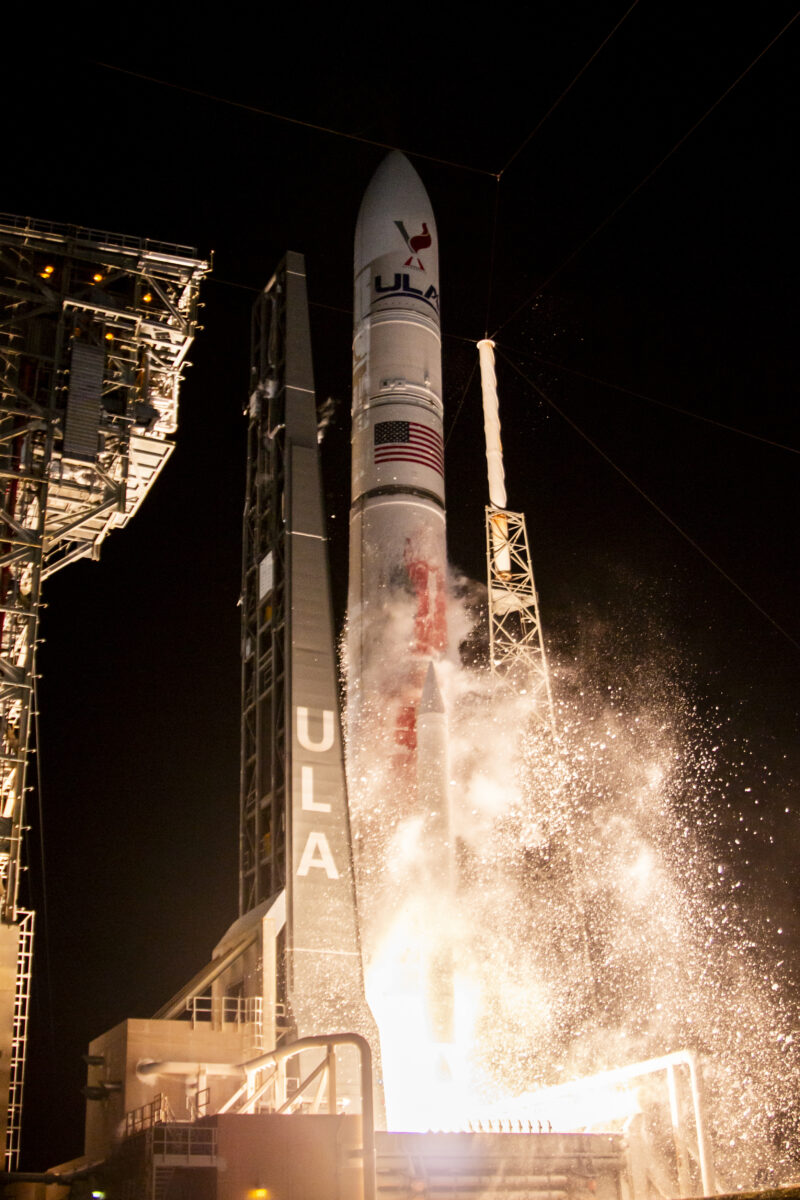
Passing midnight, weather remained “Green” and at 1:11 a.m. EST the countdown—having reached T-7 minutes by this point—halted again for the second of two planned built-in holds, this time expected to last one full hour. During that hour, Peregrine transitioned to internal battery power and at 2:08 a.m. EST Mr. Rice again polled his team to receive an across-the-board “Go” state of readiness to press into the Terminal Count following the release of the hold at T-7 minutes.
Heading deeper into Terminal Count, Vulcan’s core stage and the Centaur V transitioned from ground power to internal battery power. At T-1 minute, the Range Operations Commander (ROC) was polled for the Go/No-Go status and responded with a clipped “Range Green”. A final string of “Gos” came at T-25 seconds—“Go Vulcan, Go Centaur, Go Peregrine”—before the Acoustic Sound Water System (ASWS) came online and began flowing water onto the SLC-41 pad surface at a rate of 7,300 gallons (27,600 liters) per second to reduce the sound and energy intensity at the moment of launch.
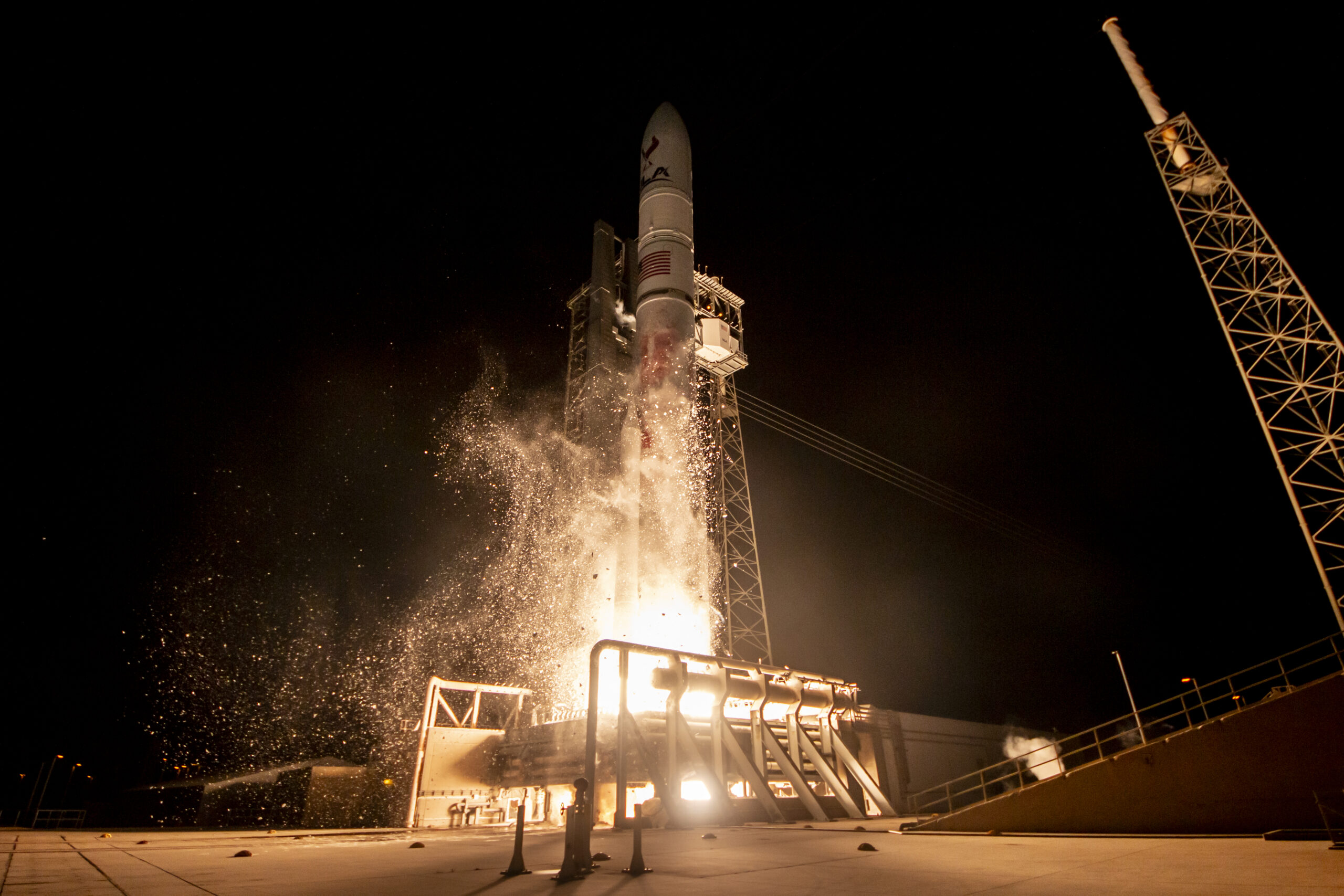
“T-10, nine, eight, seven, six, five, four, three…” intoned the launch announcer, as the twin BE-4 engines came alive with a thunderous roar, “we have ignition…and liftoff of the first United Launch Alliance Vulcan rocket, launching a new era in spaceflight to the Moon and beyond.”
Powering uphill for the first time, with nominal performance calls, Vulcan-Centaur exceeded the speed of sound at T+70 seconds and experienced “Max Q”—the peak amount of aerodynamic stress upon its airframe—at 76 seconds. Less than half a minute later, at T+113 seconds, their job done, the twin GEM-63XL boosters were expended and jettisoned, as the twin BE-4 engines continued their lengthy burn to the edge of space, before shutting down a few seconds shy of five minutes after liftoff.
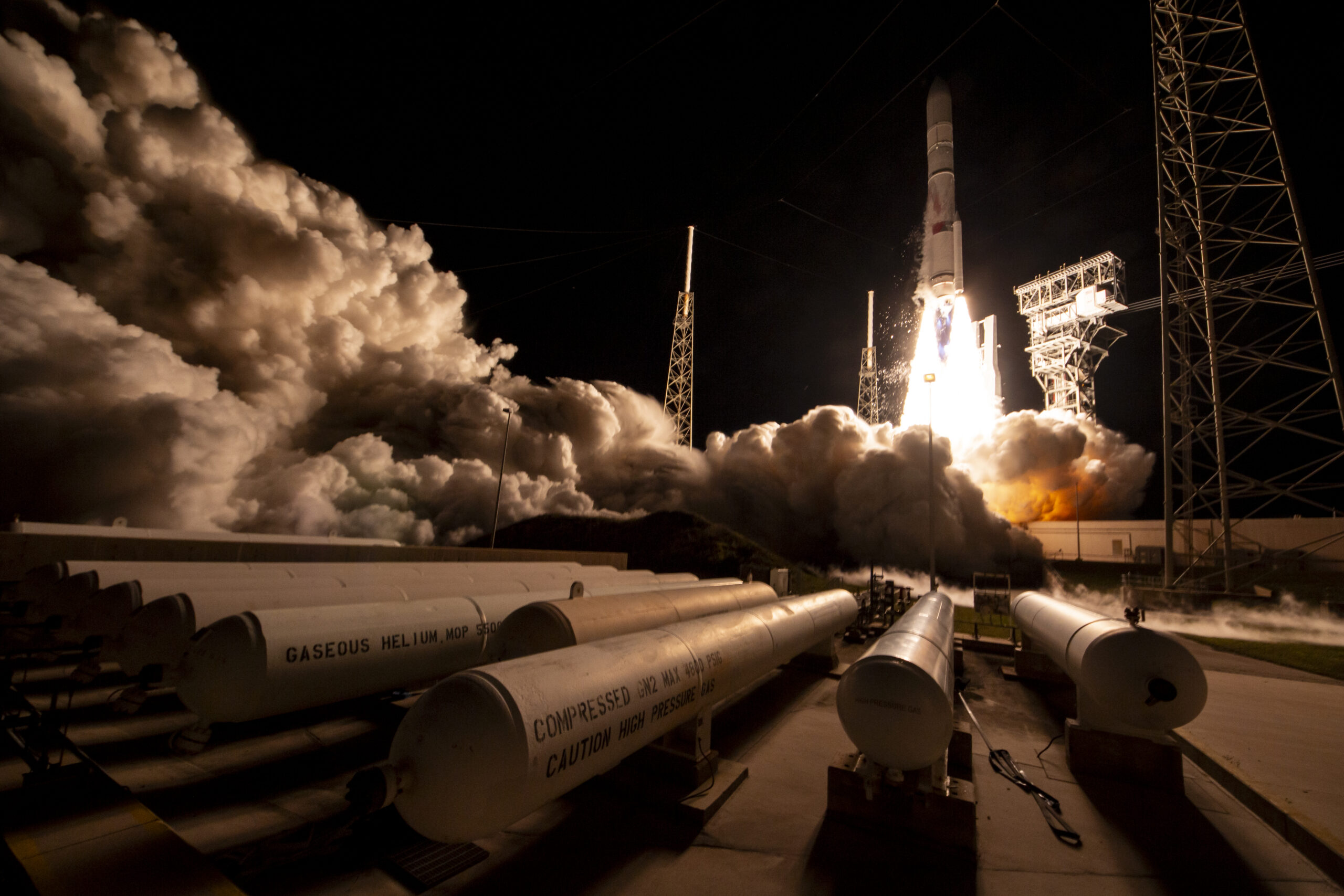
The core then separated from the Centaur V, whose pair of Aerojet Rocketdyne-built RL-10 engines were tasked with three discrete “burns” to emplace Peregrine into its highly elliptical orbit and deliver Enterprise Flight into heliocentric orbit and deep space. During the first burn, Vulcan’s two-piece composite payload fairing was jettisoned, exposing Peregrine to the harsh vacuum of space for the first time.
The lander was deployed at 50 minutes into flight, high above the Indian Ocean at a mean altitude of 304 miles (490 kilometers), with an expectation that it will land on the Moon on 23 February and spend ten days gathering data on the surface. However, within hours of deployment Peregrine’s prospects—unlike the spectacular triumph of the Vulcan-Centaur—began to dim substantially.
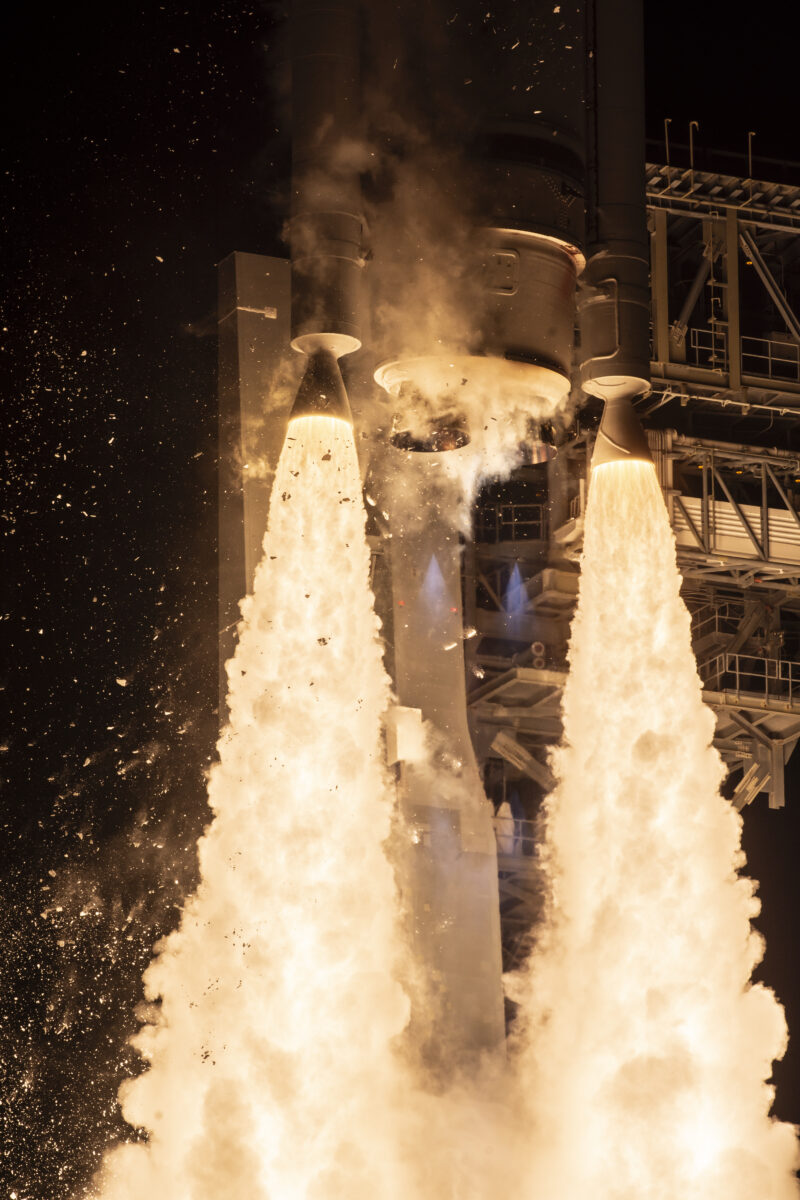
Shortly after parting company with the Centaur V, NASA’s Deep Space Network (DSN) began receiving telemetry from the spacecraft and Peregrine’s primary command and data-handling unit and thermal, propulsion and power controllers were satisfactorily brought online. But soon thereafter, Peregrine entered what Astrobotic described as “a safe operational state”, after which an anomaly arose, preventing the spacecraft from achieving a stable Sun-pointing orientation.
Initial suspicion focused on a propulsion system malfunction, “that, if proven true, threatens the ability of the spacecraft to soft-land on the Moon”. Compounding matters, Peregrine’s battery reached operationally low levels and despite engineers’ effects to reorient its solar panels toward the Sun a period of communications loss was experienced.
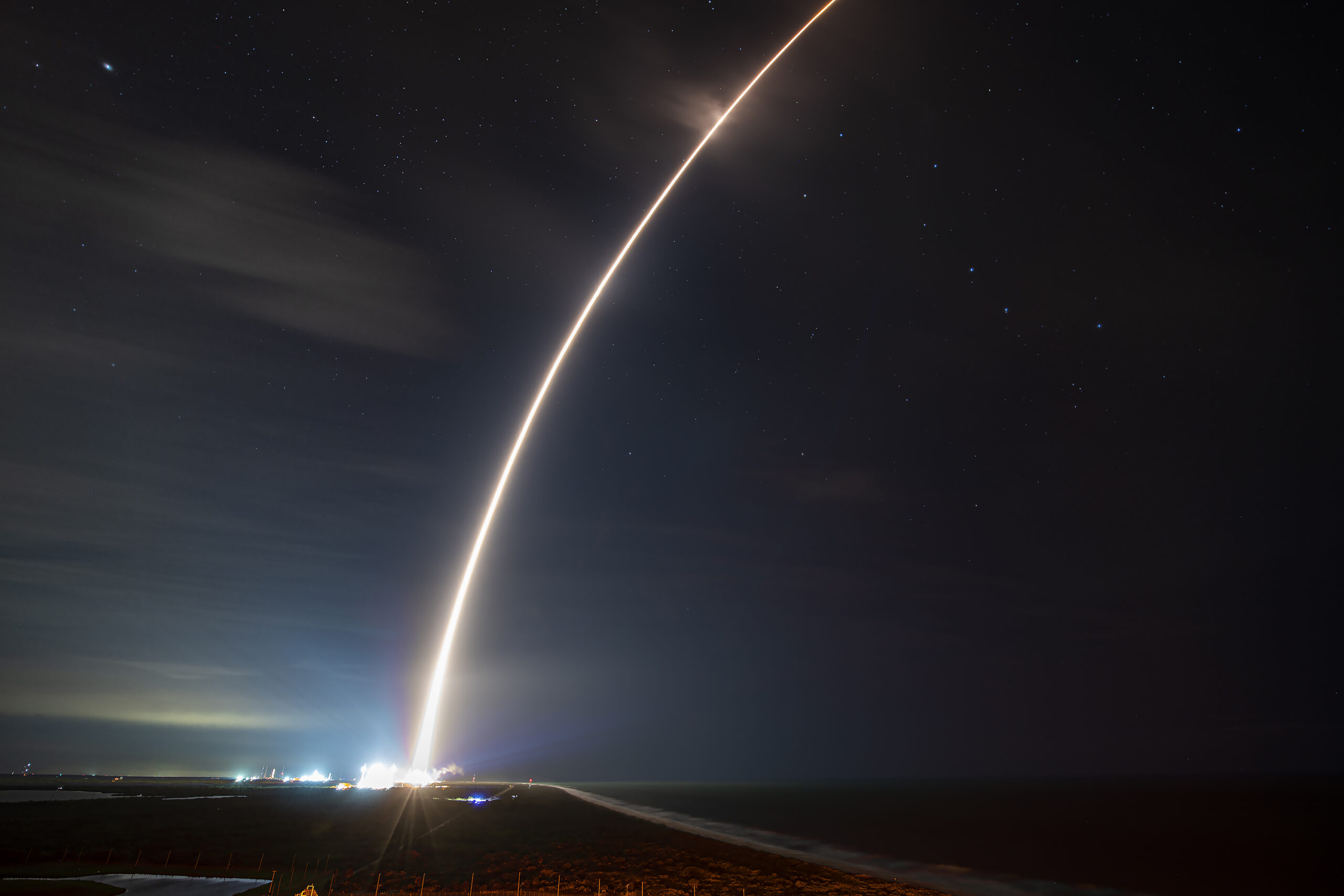
An improvised maneuver successfully re-established contact and teams set to work recharging the battery. But all was not well with poor Peregrine.
“Unfortunately, it appears the failure within the propulsion system is causing a critical loss of propellant,” Astrobotic noted in a Monday update on its website. “The team is working to try and stabilize this loss but given the situation we have prioritized maximizing the science and data we can capture. We are currently assessing what alternative mission profiles may be feasible at this time.”




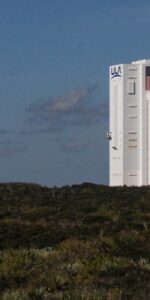

4 Comments
Leave a Reply4 Pings & Trackbacks
Pingback:VULCAN PHOTOS: Cert-1 Launch Declared 100-Percent Success, as Peregrine Labors On - AmericaSpace
Pingback:VULCAN PHOTOS: Cert-1 Launch Declared 100-Percent Success, as Peregrine Labors On - SPACERFIT
Pingback:Peregrine Lunar Lander Reenters Following Dramatic Mission - AmericaSpace
Pingback:Peregrine Lunar Lander Reenters Following Dramatic Mission - SPACERFIT